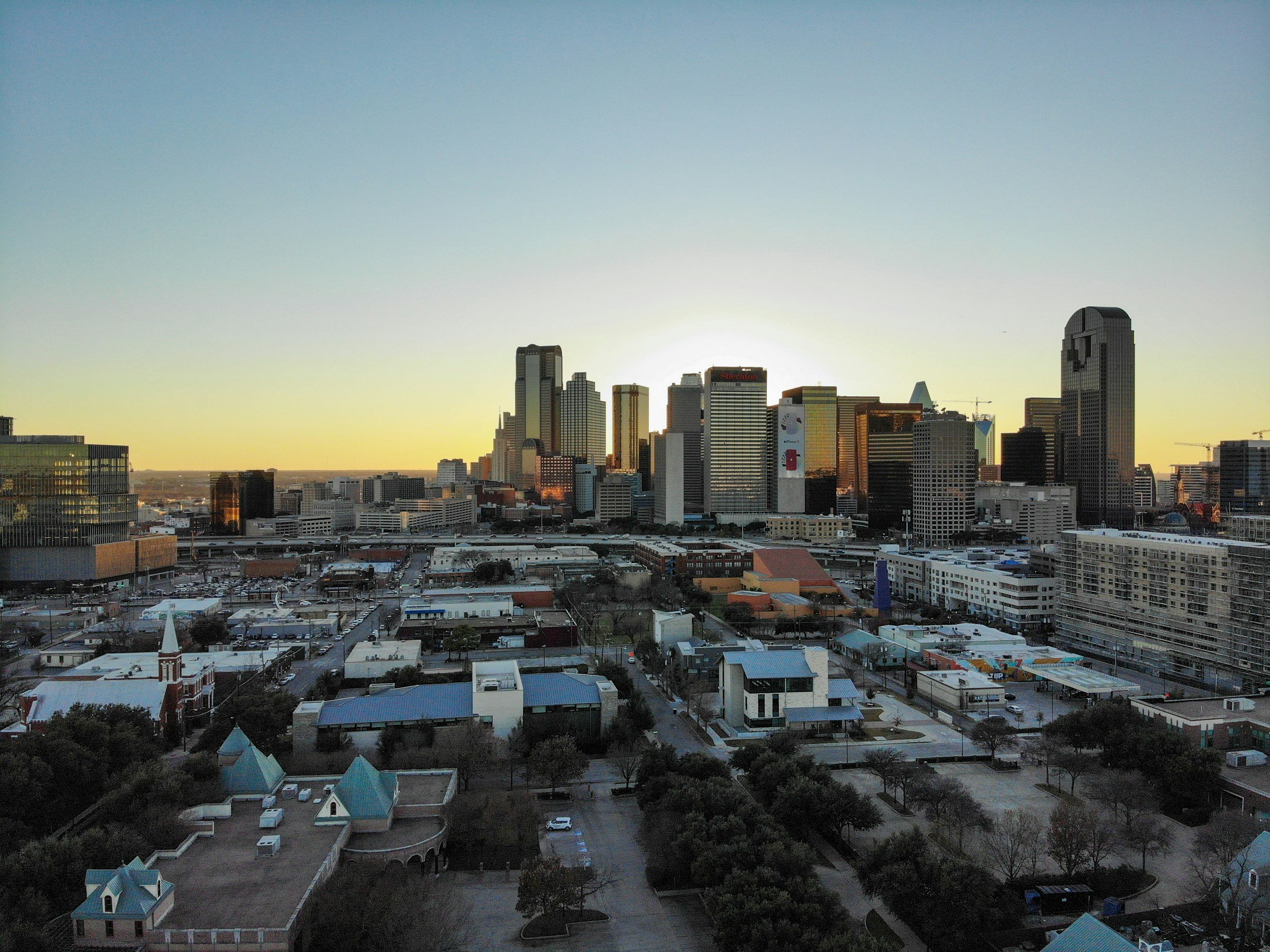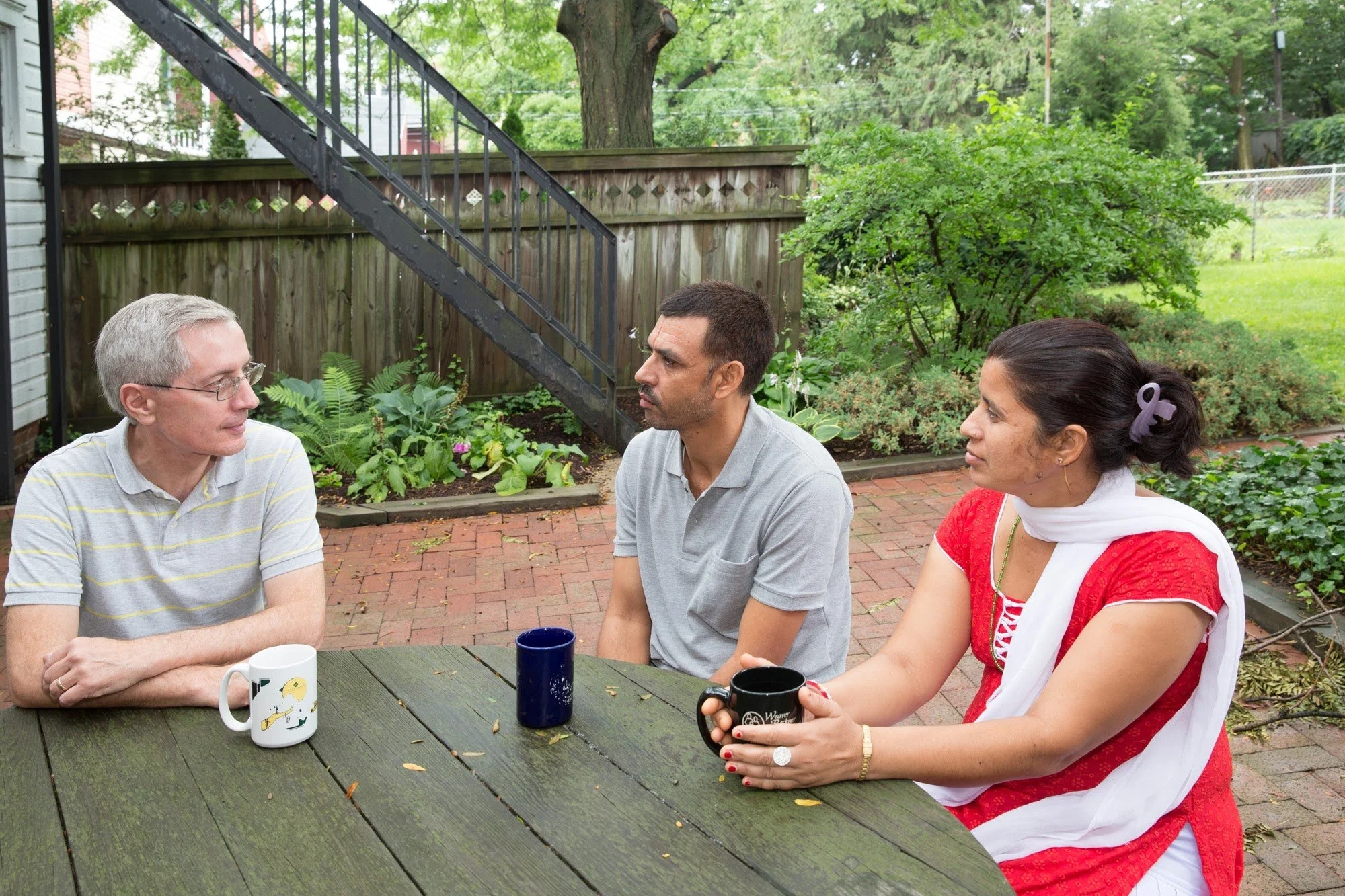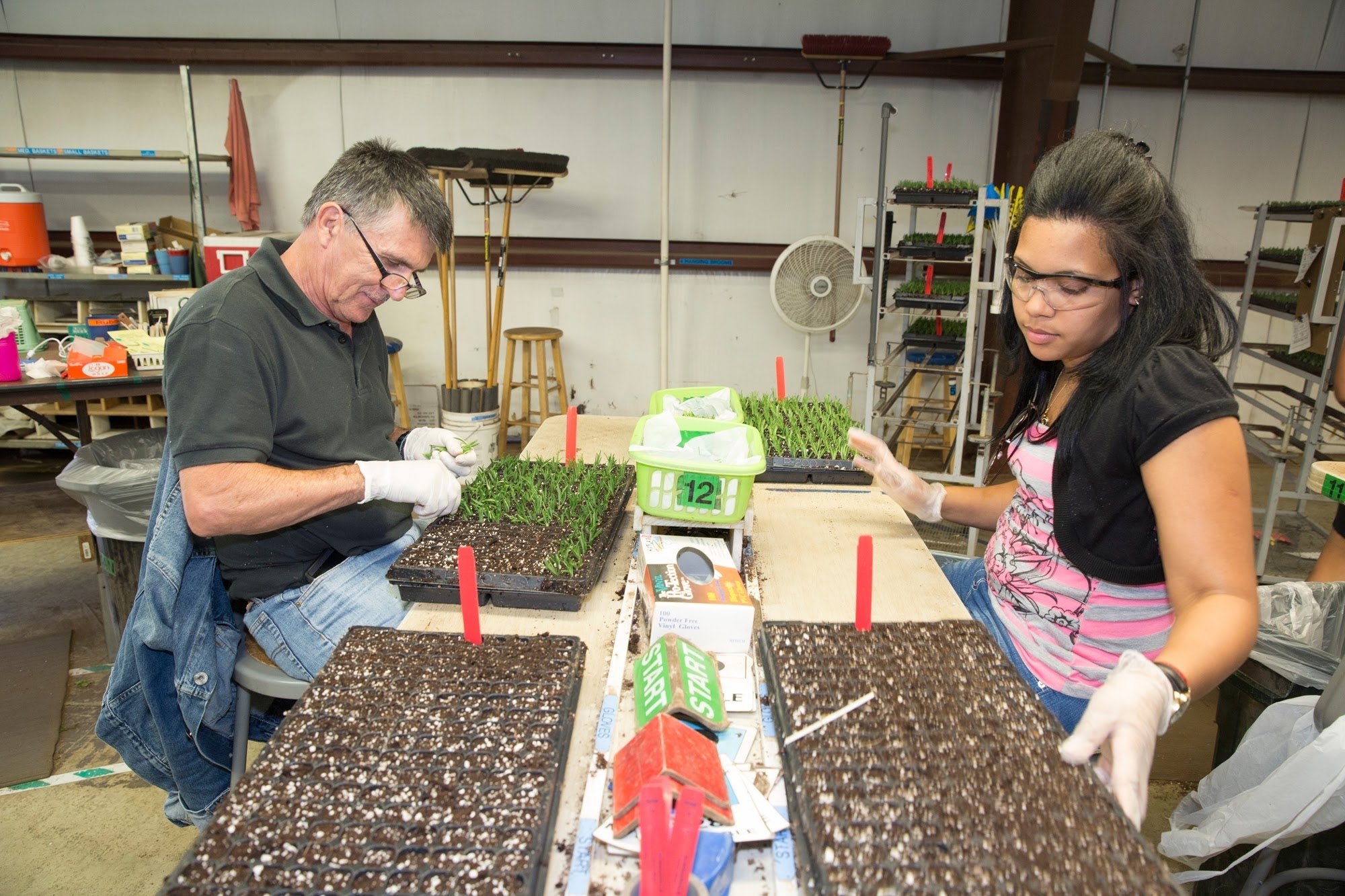Lancaster, PA
From Crisis Response to City-Wide Commitment

With a sheltered inland location and a proven track record of welcoming newcomers from neighboring communities and distant countries alike, the city of Lancaster, PA – also known as “America’s Refugee Capital” – was a natural recipient city for people displaced by Hurricane Maria’s destruction in 2017.
The city leveraged federal emergency funds to institutionalize welcoming with city-wide infrastructure, programs, and policies that helped it serve its diverse residents during the COVID-19 pandemic – and prepare for future climate uncertainties.
Lancaster, a city of 60,000 residents, received some 500 people displaced from Puerto Rico after Hurricane Maria, tapping an infrastructure built to welcome newcomers from across the globe. Lancaster welcomed Amish, Mennonite, and Quaker religious minorities in the 1700s and 1800s, followed by Puerto Rican farmworkers in the 1940s, and more recently, refugees from Bhutan, the Congo, Cuba, Somalia and Syria.
“We are a very collaborative city. When there’s a crisis, everyone gets united because we’re all impacted,” says Milzy Carrasco, Director of Neighborhood Engagement for the City of Lancaster.
Welcoming Hurricane Evacuees
Hurricane Maria damaged over a million homes in Puerto Rico, leaving the island without electricity, clean water, or cell phone service for months. Displaced people began arriving in Lancaster in the weeks following the disaster, many with plans to temporarily stay with local family and friends. Other evacuees had previously lived in Lancaster and decided to return following the hurricane. In addition, the Federal Emergency Management Agency (FEMA) designated Lancaster as a relocation site, bringing newcomers who weren’t familiar with the area.
Local leaders responded by forming the Puerto Rican Evacuee Task Force, giving structure to previously ad-hoc collaborations between Lancaster’s City Hall, more than 20 nonprofits, and the local school district. The Task Force convened regular meetings, built systems for collaboration, and launched a dedicated website. With a nonprofit organization serving as a fiscal agent and the city as an “authorizer,” the task force collaborated on case management, housing, and employment assistance.
Evacuees found stability and opportunity in Lancaster and many put down permanent roots, adding to a vibrant city, and moving the city to further institutionalize its welcoming work.
“Maria catapulted the city to welcoming. The thinking was ‘if we’re going to do this, if we have certain federal funds to support access and welcoming, then why not do it for the whole city, let’s make it city wide,” says Matthew Johnson, who served as Chief of Staff for the City of Lancaster in 2017, and is now Strategic Community Partnerships Officer for Church World Services (CWS).
“We are a very collaborative city. When there’s a crisis, everyone gets united because we’re all impacted.”

Institutionalizing Welcoming
Understanding the importance of ongoing communication with local communities, Lancaster created the Office of Neighborhood Engagement in 2018, a primary focus for Mayor Danene Sorace’s administration with the intentions of fostering greater connections between city government and the community it serves, including newcomers, and their neighborhoods. That same year, Lancaster became a Certified Welcoming city, following a rigorous process to convene multiple community partners, strengthen collaborations, demonstrate capacity for immigrant inclusion, and highlight priorities for city growth.
"Welcoming America has given the City of Lancaster a roadmap with measurable standards for our commitment to welcoming new neighbors. The Welcoming certification process and their regular consultation and expertise is a great service to Lancaster," said Milzy Carrasco, Director of Neighborhood Engagement for the City of Lancaster.
Since then, the Office of Neighborhood Engagement has grown into Lancaster’s Department of Neighborhood Engagement and Office of Language Services, with a three-fold focus on community access, civic engagement, and the celebration and promotion of Lancaster as a proudly multicultural community.
Language access is central to this work, and the city’s capacity for language services has grown along with its commitment to welcoming. In 2018, Lancaster had only a part-time staff person focused on language access; as of 2023, the work is institutionalized as a full office that manages, among many projects, a dedicated phone line and remote video interpreting service that provides translation in 300-plus languages and ensures real-time access for city employees and residents alike. A future goal is to train bilingual staff as qualified interpreters across city offices for enhanced customer service outcomes.
The Office’s efforts to advance language access also reaches county-wide community partners and stakeholders, by providing information on local language access providers, culturally competent engagement best practices, and popular language service requests. In 2022, the Office participated in Lancaster’s Places 2040 Summit with a breakout session, “The Importance of Language Access and Cultural Competency to Good Governance: Gaining Diverse Feedback for Lancaster’s Comprehensive Plan” reaching local community members, educators, government leaders, and employers. .
“We collaborate with all departments city wide, primarily promoting language accessibility, tools, services and providing staff education on [federal and state] language access requirements – with the understanding that we are a welcoming city and that we view language justice as a basic need,” said Zayra Falu, who heads the Office of Language Services. “All departments can come to us and utilize the services to serve the community.”
An Inclusive Approach to Climate Action
As Lancaster has emerged as a receiving community for people displaced by climate disasters, it is also strategic about mitigating the effects of climate change in its own community. The city published a Climate Action Plan in 2019, outlining 25 steps to improve infrastructure, address carbon emissions, and ensure access to city services. The plan, built with input from a variety of community groups, including immigrant-serving organizations, calls for robust community engagement – and the city is positioned to ensure that newcomer communities are involved at each step.
“Lancaster’s community planning, transportation, public works, and sustainability teams are all champions of our department; they’re really intentional about connecting,” said Carrasco. “When you have departments and team members that understand the importance of communicating that…it’s understanding that we have to make sure this [language access] is part of our work every day.”
Language access was a priority as the city recently completed a six-year effort to launch the Wetlands at Long’s Park, a water treatment system that also includes a boardwalk and viewing platform. The project features a multilingual website, along with on-site park signage with QR codes that include project information in Spanish, Swahili, Arabic, and American Sign Language.

COVID-19 Catalyzes Creativity
Lancaster’s response to Hurricane Maria – including its commitment to language access and development of its network – served it well in responding to the COVID-19 pandemic. Outreach strategies like bilingual virtual community meetings, social media updates, public art, and mailers that went to homes, food banks, and gas stations, and corner stores.
Engaging neighborhood businesses was a critical strategy; city leaders knew that local shops often serve as information hubs for residents with limited internet access. Culturally savvy staff understood the importance of communication that met local residents where they were.
“We thought about how campaigns happen in Latin America, with big [audio] speakers going through towns, so we thought, ‘we’re going to put a big speaker on a police patrol car that’s going to tell people to socially distance, stay home, stay calm,’” recalls Falu. “It happened in four languages; it was a real bridge of cultures. Communication is not always horizontal or vertical, it’s all about the preferences of the people you’re serving.”
The non-traditional approach to public health communications was effective and inclusive, but met a few detractors.
“As a whole the community is really supportive of welcoming,” says Johnson. “There is pushback, but it is usually very specific pushback: It’s not like ‘we don’t want immigrants here, we don’t want refugees here,’ it’s usually more about a specific issue that we want to be addressed.”
Getting community feedback is central to Lancaster’s approach to mitigating backlash. In 2022, the city instituted “Block Walks,” a community engagement strategy that connected city staff and community partners directly with residents to identify neighborhood needs. While the primary objective of Block Walks was building maintenance and repairs, the effort revealed concerns from some residents about their refugee neighbors having access to services that were perceived as preferential. Block Walks helped identify the tension and address it.
“During one walk, we met a man who expressed a lot of concerns. Because the City of Lancaster was intentional with the partners invited for the block walks, we had two CWS staff members – including our Community Organizer, who was a former refugee from the Democratic Republic of the Congo (DRC) – who were able to talk with the gentleman about his perceptions and concerns,” recalls Johnson. “One colleague was able to describe the arduous and dangerous journey refugees face and provide a general sense that they shouldn’t be seen as ‘competition’ for resources. Several times the City and CWS staff checked back with him to see if there were any lingering questions and concerns. He reported none.”
A Sustainable, Equitable Future
In fall 2023, Lancaster released a Comprehensive Plan – its first since 1993 – laying out steps to become a “stronger, more equitable” city. The plan’s formation was guided by a committee – a group of volunteer residents and stakeholders, including people from immigrant backgrounds – who engaged with partners and organizations to solicit input from more than 14,000 residents. Outreach efforts included dozens of in-person and virtual public workshops, presence at community events, community-led meetings, and phone and online surveys. The Office of Language Access facilitated the creation of multilingual materials and interpretation services in Arabic, Haitian Creole, Nepali, Spanish, and Swahili.
The Comprehensive Plan is built with the guiding principles of Equity, Sustainability, and Economy, with an overarching goal to ensure that all residents can access community programs, services and facilities – and to advance Lancaster’s resiliency against the ongoing challenges of climate change, a housing shortage, and the lingering effects of the COVID-19 pandemic. The plan includes specific strategies to promote affordable housing, advance economic mobility, expand transportation options, enhance green space, improve public health and civic engagement, promote equitable future land use, and improve access and recreation along the Conestoga River.
“The plan puts a strong emphasis on equity across all residents and areas of the city, which contributes to our welcoming spirit in Lancaster City,” said Douglas Smith, Chief Planner with the City of Lancaster.
Most recently, Lancaster passed a city ordinance institutionalizing its city-wide commitment to welcoming, requiring that it maintain its Certified Welcoming status and codifying the provision of city services to all residents. The ordinance also takes the step – a “historic” measure, according to Carrasco – of positioning its City Council to advocate for welcoming practices at all levels of government.
At a time when an uptick in migration is straining U.S. cities’ welcoming capacity and dominating headlines across the country, city officials recognize that affirming Lancaster’s preparation and resilience is key – both now and in the future.
“The ordinance institutionalized welcoming, ensuring that Lancaster’s commitment to doing this work is a lasting one,” said Carrasco. “The crisis of Hurricane Maria united all of these partners, and they continue to work with the city government. People came together, put the ordinance together, and now we’re positioned to meet the moment.”
“Welcoming America has given the City of Lancaster a roadmap with measurable standards for our commitment to welcoming new neighbors. The Welcoming certification process and their regular consultation and expertise is a great service to Lancaster.”
Resources
-
American Bar Association
City of Lancaster
A Comprehensive Plan for the City of Lancaster, PA
Certified Welcoming City Resources
Department of Neighborhood Engagement
Democrat & Chronicle
Refugees Bring New Strokes to One City’s Pennsylvania Dutch Image
-
Johns Hopkins University
Spotlight on Lancaster: Communicating through Crisis
Lancaster Online
A Year Later, Maria Evacuees, Still Reeling, Find Stability in Lancaster
Lancaster Nonprofits Joined Forces on Puerto Rican Evacuee Resettlement
Neighborhood Engagement Lancaster
Alisa Jones, CEO of Lancaster Health Center, on Contact Tracing
-
One United Lancaster
Lancaster City Ordinance No. 01-2024: Providing Welcoming and Access to New Immigrants and Refugees
PennLive
Public Art Archive
Welcoming America



